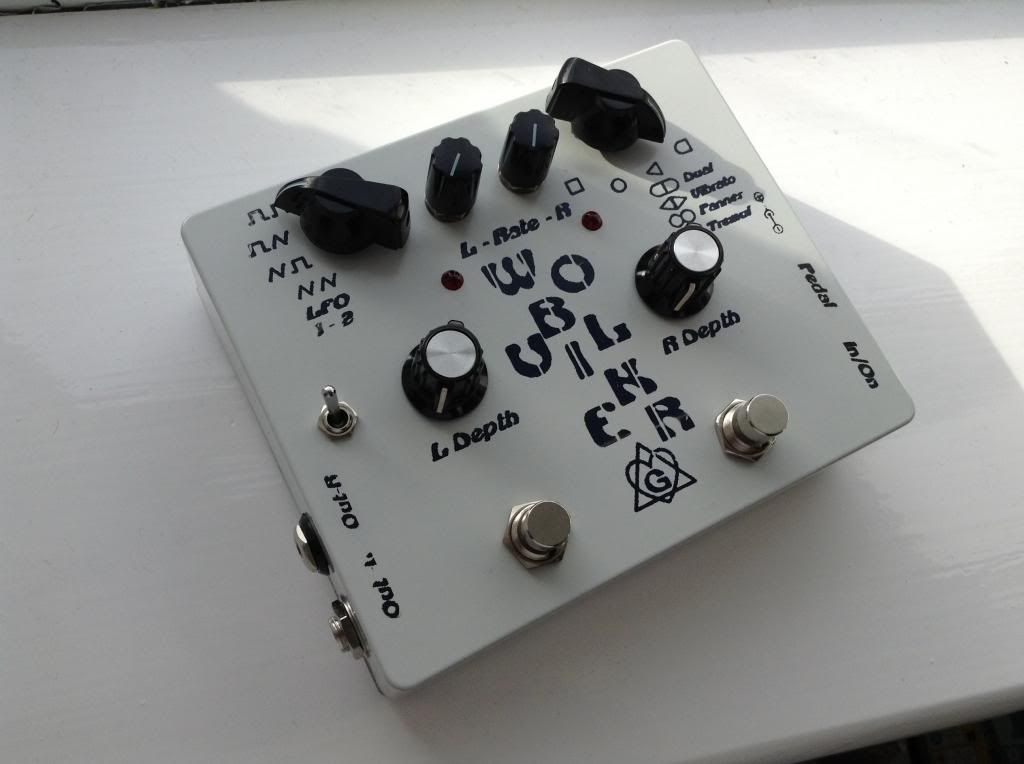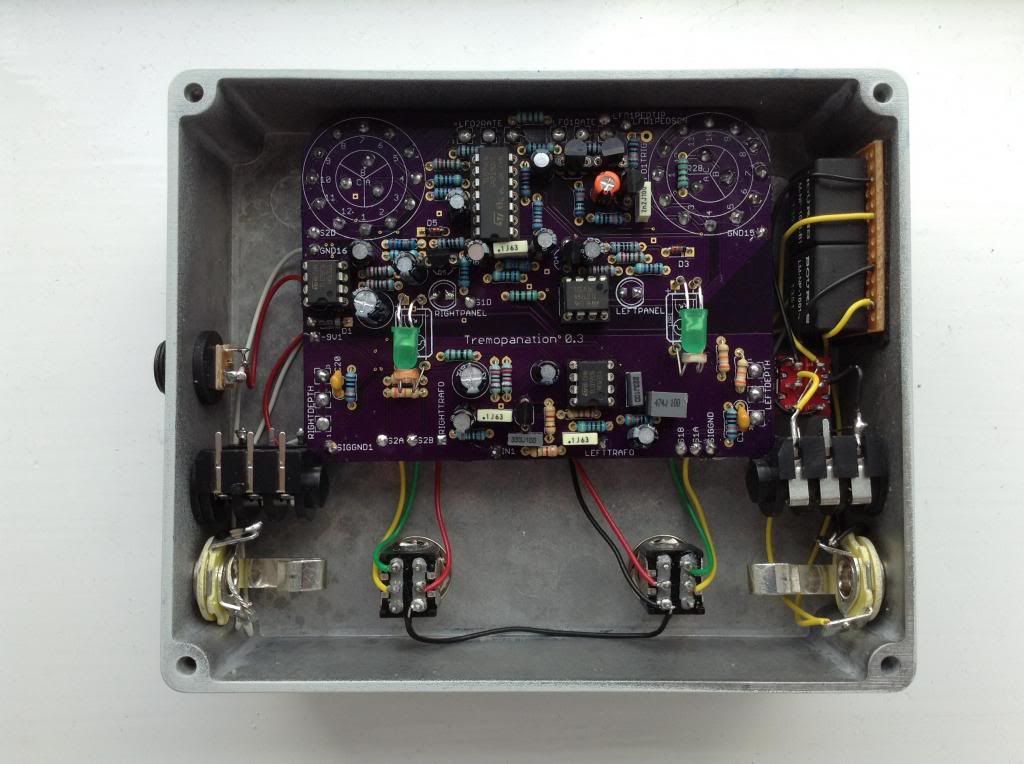
There are 4 modes.
1 TREM - both Left and Right move up and down at the same time, but with a "cross-over" effect where Left is low pass filtered and Right is high pass filtered.
2 PAN - Left and Right move in anti-phase without a cross-over, akin to a normal "figure-of-eight" auto-panner.
3 VIB - same as TREM but in anti-phase, creating subtle phase cancellation (and therefore pitch and volume change) effects.
4 DUAL TREM - this again uses the cross-over but brings into play the second LFO. Left is now driven by LFO 1 and right by LFO 2.
Modes 1 - 3 are all driven via LFO 1 only, which I wasnt completely expecting.
And because of the various cross-over and LP/HP filtering in some cases, you need to activate both L and R footswitches to get the most out of them.
That being said, with the modes where there is filtering, you can access independantly the same rate setting on L and R, but subtly different sounds, by activating only one of the two footswitches, and sum to Mono.
4 - this is the really cool one, dual speed independant LFOs. Kinda like the Doppelgangers dual LFO mode, but trem rather than phaser. Ace!
Obviously with 2 amps its a whole other story. I have had a 10 minute play with 2 amps, and it sounds incredible.
It transformer isolated outputs and phase switch. I didn't get any buzzing or grounding noises with 2 amps regardless of placement of the phase switch. Still, nice to have it. Quite a squeeze to get it all in a 1790ns, I had to omit the trigger input, but retained the speed expression input.
The only other thing left to do is try some other LED/LDR combos, as it could maybe use some more depth perhaps.
aaand heres the pics:






